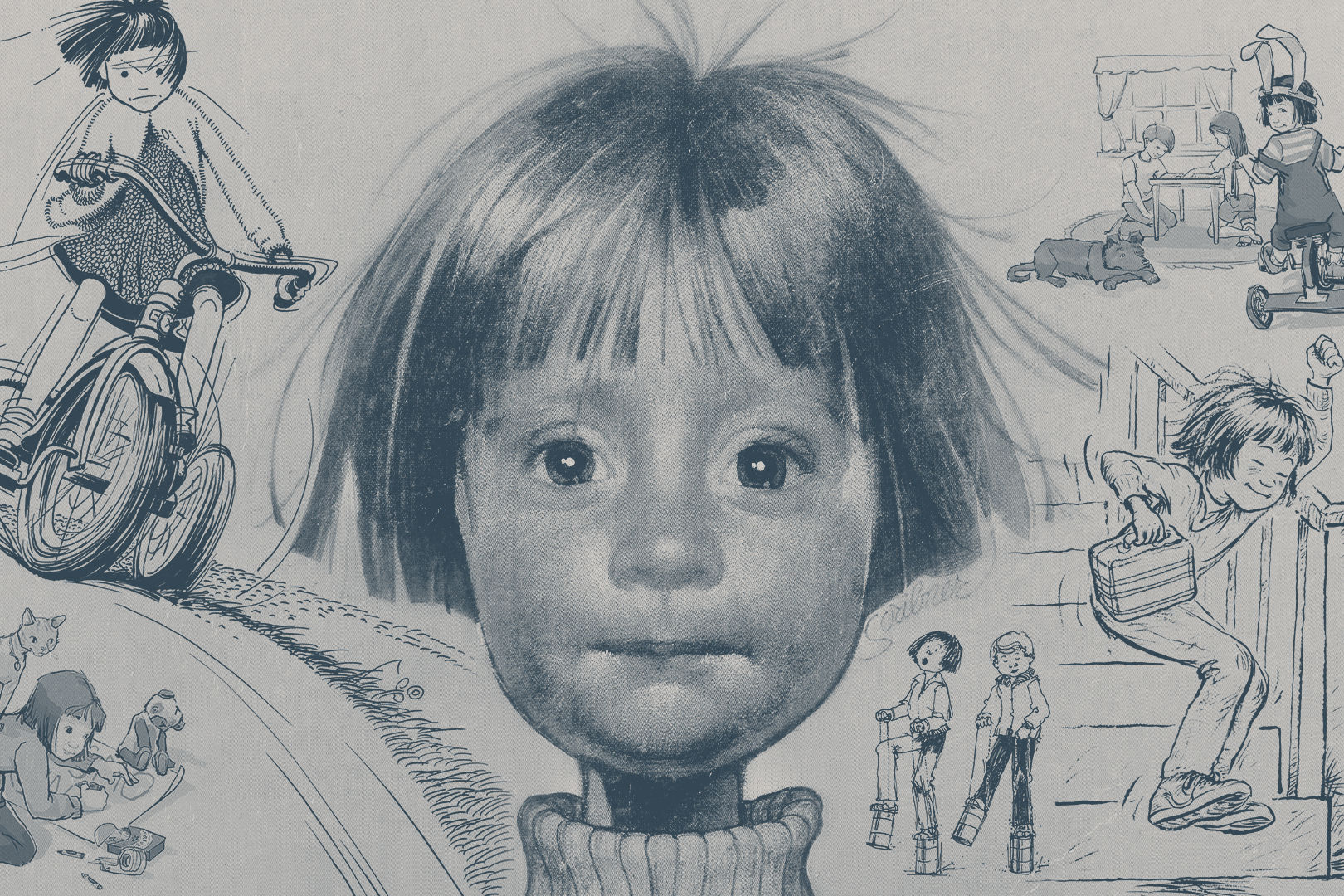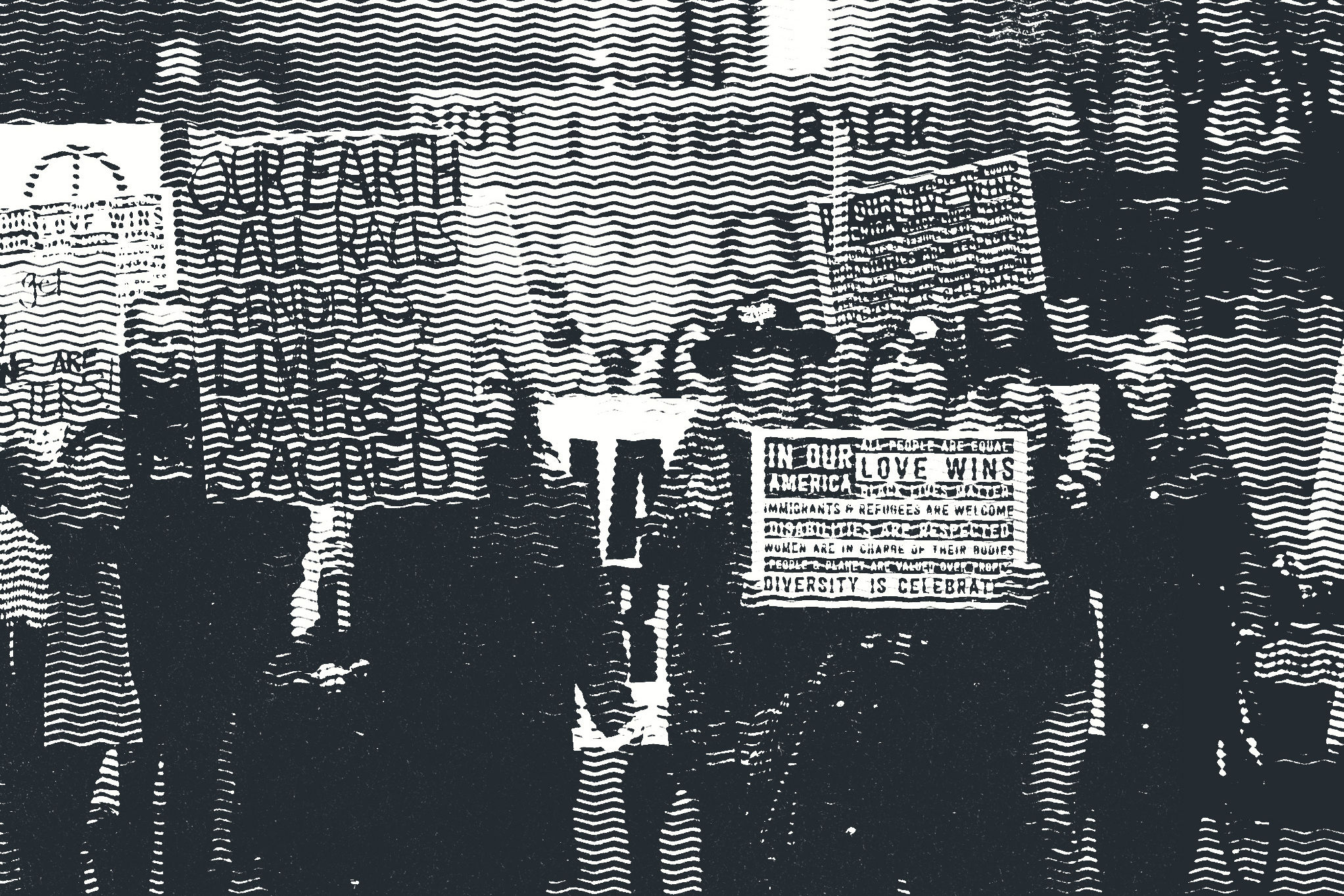A Margaret Talks to Margarets about Are You There, God? It's Me, Margaret
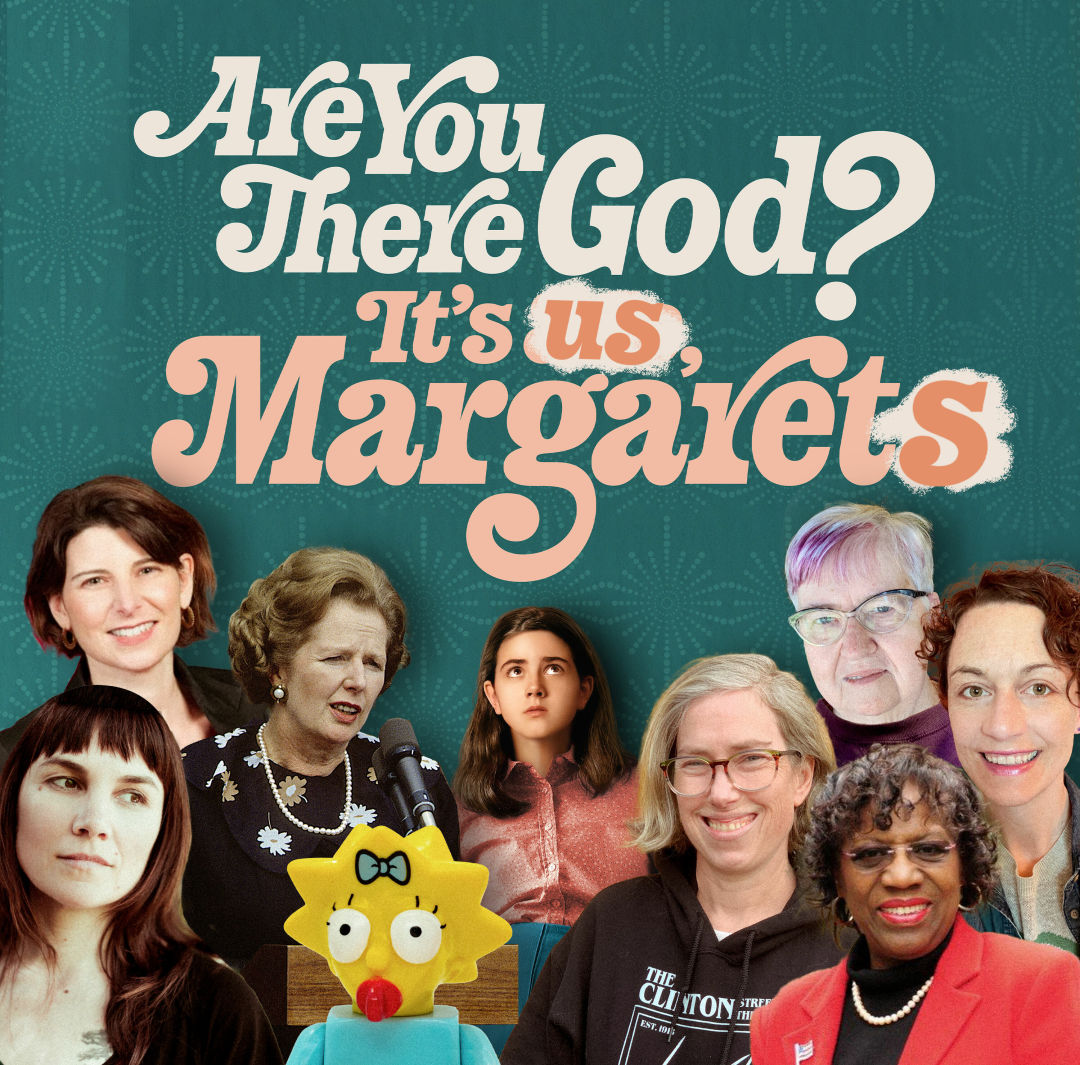
Motley Margarets, from left: Malone, Salazar, Thatcher (one of the "trifecta" of ’80s Margarets), Simpson (a Maggie, but one with some Portland cred), Simon (played by Abby Ryder Fortson), Seiler, Padian, Carter, and FiveCrows.
Image: Portland Monthly Composite
More than 50 years after its publication, Judy Blume’s classic young-adult novel Are You There, God? It’s Me, Margaret has a film adaptation hitting theaters April 28. It’s a period piece, set in the era in which the book came out, and a period piece, of course, as the title character (and all her sixth-grade friends) can’t wait to start menstruating.
In the book, Margaret Simon has just moved from New York City to the New Jersey suburbs before the start of sixth grade. There are new friends, basement parties, boy rankings, Margaret’s ongoing quest to determine what religion she’ll be (Dad’s Jewish, Mom’s Christian), “we must increase our bust” chants and exercises, and episodes of extreme embarrassment, such as when the person ringing up pads at the cash register turns out to be (gasp!) a boy. The film, from screenwriter and director Kelly Fremon Craig (The Edge of Seventeen) and coproducers including James L. Brooks (of Simpsons fame), Brooks’s daughter Amy Lorraine Brooks, and Blume herself, stars Rachel McAdams, Kathy Bates, and Ant-Man’s Abby Ryder Fortson, who plays the title character.
It's an impressive list of talent for a prolific and revered author, but, oddly, one who hasn't seen many of her books get the big-screen treatment. A movie version of Blume's book Tiger Eyes was directed by her son, Lawrence Blume, in 2012, and her vast work has spawned a few TV projects, but that’s all. (Similarly, McMinnville-born Beverly Cleary had only one real big-screen adaptation, 2010’s Portland-set Ramona and Beezus.)
Published in 1970, the book’s characters and setting are far from universal and even slightly passé. Everyone has a big house and yard and a stay-at-home mom, and can afford to pay someone else to mow their lawn. It doesn’t acknowledge that not every kid who menstruates is a girl, or that not every girl menstruates. Depending on the edition, a reader may encounter very dated descriptions of belts and clips that haven’t been a part of Maxi Pad technology for decades. But anyone who’s ever nervously waited for something to begin, been eager for their future body to start taking shape or embarrassed that it was already doing so, worried about whether their friends were speeding ahead of them, or wondered where they fit into the world can feel a connection with the book, even with its limitations.
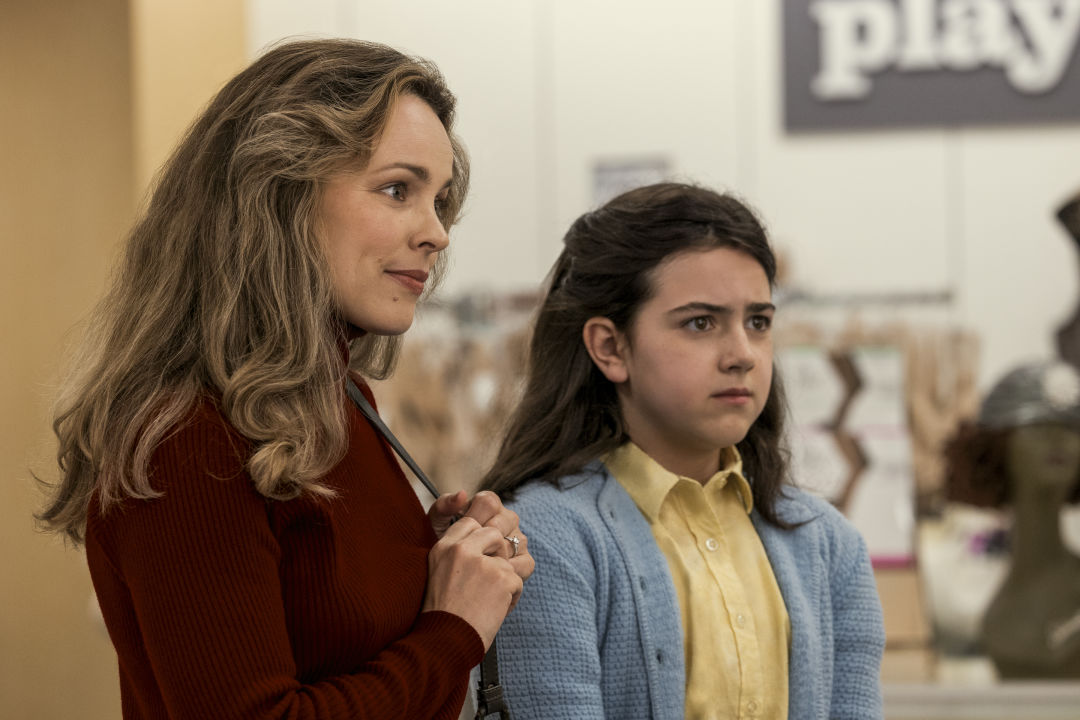
Rachel McAdams and Abby Ryder Fortson play mother and daughter in Are You There, God? It’s Me, Margaret.
There's another group, though, that has an even deeper connection with Blume’s menstrual tale: people who may find themselves associated with the book even if they’ve never read it; people who, depending on their age, are likely to have it brought up in conversation on a somewhat regular basis; people whose friends keep asking if we’ve bought our tickets yet for the film’s opening weekend.
I’m talking about the Margarets. A Margaret myself, I called a few other Portland Margarets to ask if they’d read the book, and what they remembered about sharing a name with the title character.
Among us, there are early developers and late bloomers, people who got their periods as early as 11 or as late as 18. We’re all moms, but didn’t name any of our kids Margaret. Some of us were named after a long line of family Margarets, and one of us had a mom who “defied” the social norms of Shreveport, Louisiana, to give her Black daughter this regal, classic name that was, in that time and place, unofficially reserved for white babies.
Born in the ’70s in Utah to a Mormon family, Margaret FiveCrows wasn’t named after anyone, as far as she knows. She says her mom just liked the name. She was supposed to be called Christina, but apparently an aunt had called dibs on naming a kid that, and she ended up with her mom’s pick instead. She didn’t know any Margarets growing up—at least not personally. But she recalls a “trifecta” of Margarets in the world then.
“Margaret Thatcher was very popular in Utah. People thought she was wonderful,” FiveCrows says. “Now that I’m older I think, oh my gosh, she was absolutely monstrous.” There was also the terrifying Large Marge, the undead truck driver from Pee-wee’s Big Adventure. And there was Margaret Simon, the girl who prayed to God to get her period.
“Her whole point of view, she was waiting for this wonderful thing, she wanted her body to change,” FiveCrows remembers from the book. “I got my period when I was 11, so I was quite young. I had D boobs by the time I was 12. I grew into them, but it was a horror at 11 and 12. So I just thought, this girl is crazy. I did not relate to being excited about finding something in my underwear or running to tell my mom—everything about her was just beyond me. It’s like culture shock. I did not understand her. She was not Mormon. She was not from Utah. She was the other Margaret,” FiveCrows says. “But it was interesting because I did think, ‘Well, I guess that mine is not the only experience.’”
What's more, FiveCrows says, the Blume book was one of the only places she learned about menstruation. “Nobody talked about it.… People talked about bras, but not periods. It wasn’t until I got to college that people were like, ‘I'm on my period.’ I thought, ‘Wow, you can just say that out loud? I'm gonna start doing that.’”
Now a graduate student getting her master’s in social work, and a mom of two, FiveCrows has no trouble talking about periods or anything in their vicinity. “I’ve got vulvas all over my house,” she says, referring to a sewing project she started when she was working with people who were dealing with sexual assault and sexual trauma. She even made vulva Christmas ornaments, which her son kept taking off the tree last year. “The kids are sick of the lady parts,” she says. “But they know what’s where.”
In the early 20th century, Margaret was the third-most-popular name for baby girls born in the US. By 1970, when Are You There, God? It’s Me, Margaret was published, it had fallen to no. 80. While it’s been increasing in popularity over the past decade (interestingly, after Thatcher died), its rank is still well over 100th.
When Margaret Carter was born in 1935 (a few years before Blume herself, in 1938), the name was still in the top 10—but not for Black babies in Shreveport. Along with the name Katherine, Carter explains, Margaret was simply “too classic,” too “deserving of respect,” to be written on a Black birth certificate.
“It was pure racism,” says Carter, who was the first Black woman elected to the Oregon House of Representatives in 1984. Later elected to the Oregon Senate, she represented North and Northeast Portland in Salem until 2009, when she left to take a position with the Department of Human Services.
“Black people were not allowed to be named Margaret,” Carter says. She didn’t learn until decades later that her birth certificate lists “Marguerite,” as her mother had made sure she was Margaret on everything else. Carter says her mother told her she “was so fussy and talkative when I came into the world that I was going to quote-unquote be somebody, and she wanted my name to reflect who she thought that I would be.”
Carter allowed siblings to call her Margo, but made very clear to everyone else—including, later on, some of her colleagues in the Oregon Legislature—“that I am definitely Margaret.”
Carter was in her 30s when Are You There, God? It’s Me, Margaret? was published. She’s never read the book, but she’s planning to check it out. “I grew up reading, reading, reading,” she says, having been taught from early on by her mother that “education is the key to freedom to Black people in this country.”
When it came to periods, the knowledge came from older sisters, not books. Carter recalls that “it was the responsibility of the older girls to teach the younger girls.”
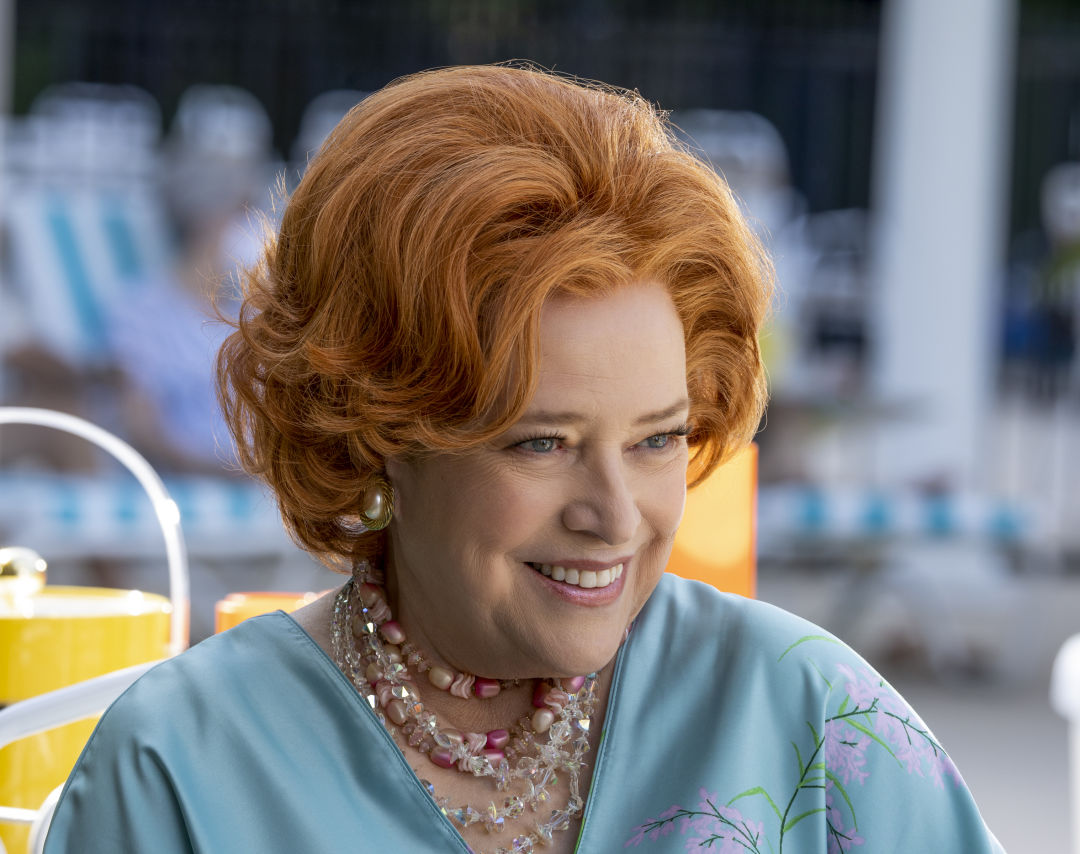
Kathy Bates as Margaret Simon’s paternal grandmother, Sylvia
Born four decades after Carter, Margaret Salazar had an older sister, too, and didn’t necessarily need a book to fill her in on period particulars. She also recalls sleepovers where girls would pass notebooks around and fill them with semisecret details about who had and hadn’t gotten their period yet, and what it was like. But she still guesses she read Are You There, God? It’s Me, Margaret “about 57 times.”
“It spoke to me on a bunch of levels,” says Salazar, now the Northwest Regional Administrator for the US Department of Housing and Urban Development, “puberty and trying to understand the body and periods and all that. But the character is half Jewish. I'm half Jewish. There's a lot about that in the book. She was struggling to understand religion and struggling to understand her identity. And I was going through the same thing, am still going through the same thing, being from a mixed religious background.”
Salazar says it was important to her dad’s parents that the grandkids maintain their Jewish identity. (In the book, Margaret Simon’s paternal grandmother hopes for the same.) Growing up in Hood River, she says, “That was something I struggled with a lot, and … I was in a small town where there were really no other Jews.”
There weren’t other Margarets, either, not even in her family. Her mom, whose turn it was to name the baby, just liked the name, Salazar says. Once her family went to an AM Northwest taping and met then-cohost Margie Boulé, and she knew some Maggies. She even tried being a Maggie, but her sister took it as an invitation to call her Maggot. And it felt a little too Irish for someone who was half Jewish, she says, so she abandoned that plan after a few weeks.
“I honestly don’t feel like it suits me,” Salazar says of Margaret. “It's a very old-fashioned name. And I think of myself as a little edgier. I like that it’s a formidable name … but it feels like a weird fit.”
Margaret Malone, who was named after her mother’s half-sister who died in childhood, has always been “the whole thing, never had a nickname.” She’s noticed that Margaret is “making a resurgence for the young-young, like my kids’ generation. All those old-fashioned names are back in style.”
That wasn’t the case when she was growing up. Another Gen X-er born in the ’70s, she was the only kid she knew called Margaret. “I just remember feeling like the name was so big and heavy, and everybody around me was, like, Jen, Jenny, everyone had these sporty names and I was lugging around this big Margaret.” A turning point came, Malone recalls, on a cemetery walk. “I realized there were a lot of dead Margarets, the name Margaret was everywhere, all over headstones. I thought it was cool. And I liked that. And so in a weird way, I felt connected to all these other Margarets, even though most of the ones that I knew were dead.”
Now a writer and writing instructor, Malone read a lot of the Judy Blumes, but she read the book with her name on the cover the most—not that she was happy about it being on the cover. “I was so embarrassed, because, of course, it’s the one about the period. I can't get the one where they get kissed? I can't get the one about masturbation? I get the one with the period? Really? Oh my gosh, I just remember being so embarrassed by it, which is so funny now,” says Malone. “Menstruation was not really talked about at all in my generation.”
It didn’t help that any time anyone learned her name they’d immediately bring up the book, which Malone read for the first time before she began menstruating. The book made her “trepidatious,” she says. “I was absolutely horrified. [Blume] talked about the belt—it was old-school. There was gear, there was blood, it sounded awful…. It further embarrassed me that I had to go through this thing.”
Malone’s mom had never given her many details. She had a Seventeen magazine (or the ads in it, at least), and eventually a friend who offered so many details it was almost TMI. And there was Judy Blume. “I think in a way I didn't really understand, I was really grateful, because if it weren't for that book I wouldn't really have known anything.” She thinks it might be almost time to share the book with her daughter, who just turned 9.
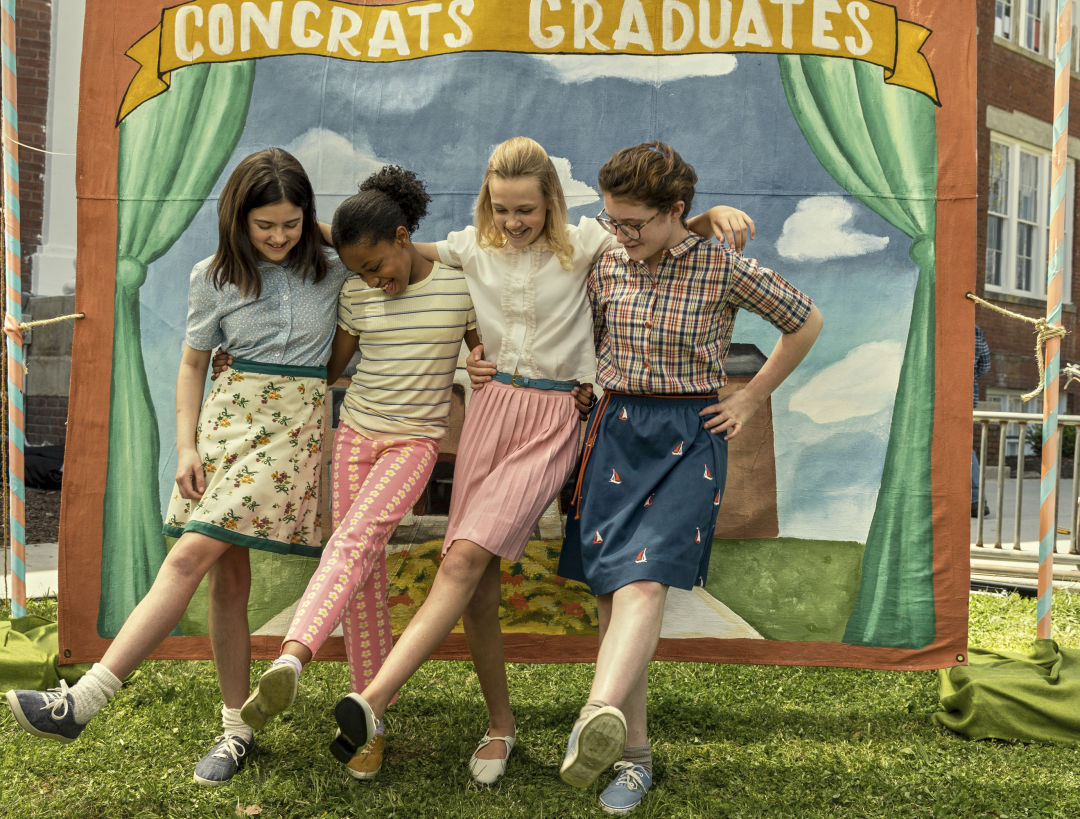
Margaret Simon (played by Abby Ryder Fortson, left) and her new New Jersey friends in the 2023 film
Malone’s mother-in-law, Marge Padian, is also a Margaret. But she had a lot of Margarets in her family (a maternal aunt and grandmother, and several on her father's side—he'd chosen the name, as her parents took turns naming their eight children) and thus always went by the nickname. Her husband’s brother also married a Margaret who took the men’s last name, so the nickname was even handier then, not to mention when her daughter-in-law entered the picture.
Born in the 1940s, Padian was well past puberty when the Blume book came out, but she remembers when her son read the book. “We tried to introduce our kids to lots of things,” she recalls, “and I knew she was a good author.” Her son ended up presenting a book report to his elementary school class on Are You There, God? It’s Me, Margaret. “He just very straightforwardly got up and gave a talk, and talked about menstruation and everything. His teacher, who happened to be a man at the time, just turned bright red. He couldn’t handle it.”
Padian herself might not have had the benefit of a boy in her class giving a book report that touched on menstruation, but she was in the know, at least for the basics. “My mother mentioned it,” she says, “so we were aware of it, and I think they taught us in school a little bit about it. We really weren't trained or taught much about sex or anything, but we did learn about menstruation, since we needed to get pads. Often we didn't have money for pads, so then we just used an old rag or something, an old shirt,” says Padian, now a retired computer analyst. “So yeah, I probably would have appreciated a book like that.”
I’m a Margaret, too, sharing the name with my dad’s aunt and grandmother, while my Canadian mom appreciated the nod to Queen Elizabeth’s kid sister. I was born in 1976 and didn’t meet another young Margaret for a good 10 years, when one showed up on my softball team. There was the occasional Meg or Maggie at school or work, but I was never confused with them. When I ended up sharing an office with another Margaret and had to find a nickname to go by because, well, she’d been there first, it was a new experience, and I wondered if that’s what all the Jennifers and Sarahs and Brians I knew had to deal with all the time.
The fictional Margaret Simon, though, was a kid I knew, or at least I felt like her creator (Blume, I mean, not God) knew me. I was the last person in my group of friends to get my period. I think I carried the same baggie of just-in-case-it-starts pads and tampons to summer camp for four years, never needed. I remember YM magazine letter writers in that era sharing their most embarrassing moments, and they were often about a boy or man finding out a person had their period. I knew that was a ridiculous thing to be embarrassed about, but, as I waited and waited, I still wished I could have related. Sometimes when I hear about the awesome work done today by period equity groups, I hope the late bloomers like me aren’t feeling left out.
Just like me, most of the other Margarets I talked to didn’t know many Margarets in Portland, but now our name is bond—a bond, that is, that connects us across the generations. Maybe some of us will even go see the movie together.
“Nobody has ever just called me and said, ‘Let’s talk about the name Margaret.’ I so appreciate you calling me,” Carter told me. “I have to tell you. I am very proud of my name.”
“I’ve liked all the Margarets that I’ve met,” says FiveCrows. “I don’t know if the collective stress has just made us more empathetic folk, but I tend to see some sisterhood.”
Composite image at top: Courtesy Lionsgate, Courtesy Margaret Malone, Courtesy US Department of Housing and Urban Development, Mark Reinstein/shutterstock.com (Thatcher), Julian R. Paterno/shutterstock.com (Simpson), Courtesy Margaret seiler/Don Nelson, Courtesy Marge Padian, Courtesy Margaret Carter, Courtesy Margaret FiveCrows


